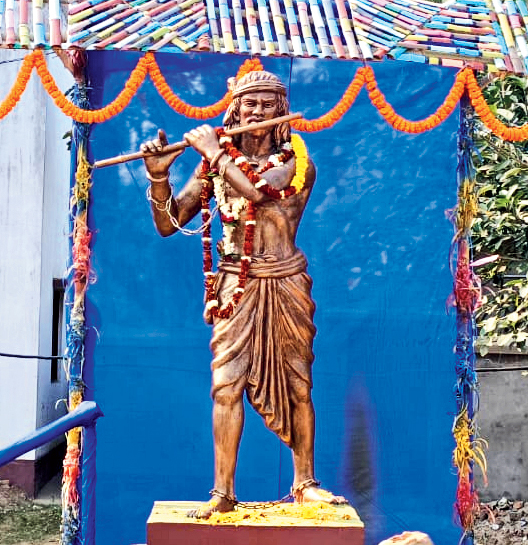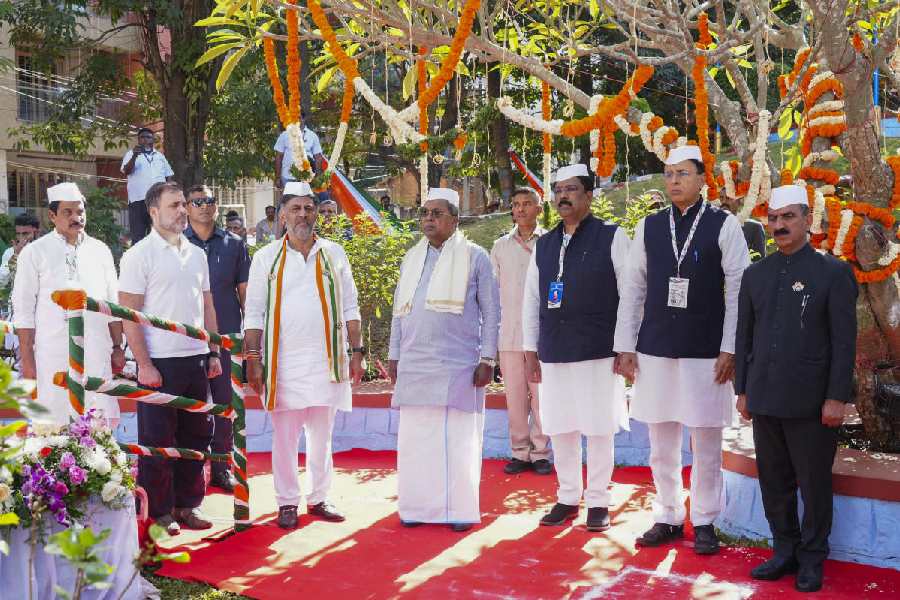A non-political tribal organisation has found in freedom fighter Bajal Soren an icon for the movement against the Citizenship (Amendment) Act and the National Register of Citizens.
While Sidhu and Kanhu, leaders of the Santhal rebellion that had rocked the British government in 1855-56, are popular tribal icons, Paschim Banga Adivasi Gaonta has taken an initiative to popularise Bajal in the resistance against the NRC and the CAA.
To popularise the cult of Bajal and pay tributes to the tribal hero, a seminar-cum-cultural fair was held at Abdarpur near Suri in Birbhum on Wednesday and Thursday.
As a step to honour his heroics, Gaonta had in 2018 installed a statue of Bajal in Abdarpur.
“The tribal population is worried over the CAA and the NRC as they don’t have documents that might be required to prove their citizenship. So, in our movement against the NRC and CAA, we have decided to showcase the valiant Bajal Soren as our role model. The history of Bajal’s struggle against the British will serve as an inspiration for our protest against the Centre’s whimsical decisions,” said Rabin Soren, secretary of Gaonta.
The leaders of Gaonta said Bajal was a contemporary of Sidhu and Kanhu. Santhal had been arrested by the British from his native Kalhajor village, now in Jharkhand’s Godda district, and kept at Suri district jail.
He was known for his skills in playing the flute.
“An agent of the British Roop Singh Tamuli used to snatch pets and crops from the adivasis in the name of tax collection. He used to torture tribal villagers and this had angered Bajal so much that he rose in rebellion and killed Tamuli. The act landed him in Suri jail and the court sentenced him to death. In his rebellion there is a message that makes him a role model in out protest against the Centre’s effort to implement the NRC,” said Soren.
Those interested in history of the tribal movement said there was not much information about what had happened to Bajal after he was thrown behind the bars in Suri.Sukumar Saha, who closely follows tribal history, said: “The legend goes that his flute inspired the jailor’s daughter and she ensured that Bajal was secretly released from jail. After his release, he disappeared.”
“The tribal population has no papers as they have the tradition to bury all documents of the dead along with the body. This has been a ritual among many tribal groups in Bengal and Jharkhand. So, it will be almost impossible for a large number of tribals to show documents necessary to proof their citizenship,” he added.
Hundreds of representatives from various parts of the state and Bangladesh had come to Suri to participate in the two-day programme and share their views on Bajal.
The event reflected the worry of the tribals as several posters and banners against the CAA and NRC were put up at the venue.
One such poster said: Adibasider jodi hoi NRC, Bajal Baba hobe amader role model (if NRC is implemented among tribals, Bajal will be our role model).
“Very few people know about Bajal Soren. We want to throw light on his life and struggle. For us, Bajal is a role model,” said Surajit Singh Hansda, a demonstrator in pharmacology at Bankura Sammilani Medical College and Hospital.











